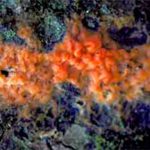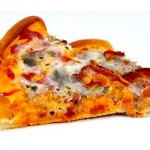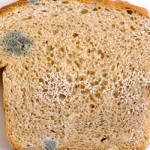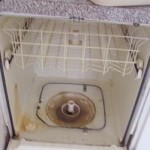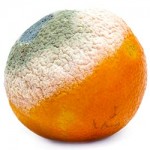Orange Mold on Cheese: The Facts to Know

When you find an orange mold on cheese, what should you do? Should you keep it? Should you throw away everything? This is a bit tricky because cheese is actually made of mold too. What’s the best thing that you can do, anyway?
It’s frustrating to look into the refrigerator and see your favorite chunk of cheese with a layer of mold growing on it. You may be tempted to cut off the moldy area and eat the cheese anyway to avoid wasting it. Are you putting your health at risk when you do this? is it safe to eat moldy cheese?
The Facts about Mold
Keep in mind that not all molds are dangerous or unwanted. In some food processing stages, we actually need to have molds so they can turn the food into something tasty and actually healthy. However, you also need to remember that there are different kinds of molds –the good and bad ones. Judging from the appearance or the color alone will give you a pretty good idea of what to do.
Orange Mold on Cheese: Is It Dangerous?
Mold grows on cheese when it’s exposed to air. The mold consists of tiny fungi that grow on moist, organic surfaces such as a place of cheese left partially unwrapped in the refrigerator. Because cheese is relatively high in fat and other nutrients, it provides a good source or nutrition for the fungi, allowing them to comfortably feed and thrive.
Because mold fungi like moist surfaces they’re more likely to grow on cheeses that have a higher moisture content, particularly soft and shredded ones, and will grow more slowly on hard cheeses. Once the package is opened and the cheese is exposed to air, the cheese becomes susceptible to mold formation.
So, if you want to steer away from the unwanted molds, what kind of color should you be aware of?
Green blue? Black or grey or even white ?, Pink, orange, and red? Brown?

So it is pretty clear that the orange mold on cheese is unwanted although it is pretty harmful. Basically, if you can stay away from these colors (in terms that you don’t consume them), you are going to be okay and you won’t be contaminated with anything, see also : Black Mold in House: The Cause and How to Deal with It.
Keep in mind that not all molds are unwanted. Some molds are needed for the food processing stage, such as the blue mold (which is used for making the Blue Cheese) or the white and soft marsh-mellow mold (which is used in making the Brie or Camembert Cheese).
If You Eat Moldy Cheese, Is It Harmful?
There are actually hundreds of types of mold fungi, most of which are completely harmless. One type of mold even produces the antibiotic penicillin. Unfortunately, not every mold that grows on cheese is harmless. Some types of mold produce toxins known as mycotoxins which can cause will effects if they enter the body. Since you have no way of knowing whether the mold growing on your chunk of cheese is harmless, eating moldy cheese is an unhealthy practice that should be avoided.
Orange Mold on Cheese: Common Reasons
So, how do you get an orange mold on cheese, anyway? Well, in this world where everything can be mixed with others, contamination is pretty common and regular. The orange spot on your cheese can happen because of these reasons:
- Poor and not good air circulation
- Poor handling equipment or sanitation
- The cheese is left sitting on whey
- The cheese isn’t dry enough before the aging
- The salting process isn’t enough
- Cheese cross contamination
If have a chunk of moldy cheese you’d like to salvage, you may be able to cut off the affected area before eating it. It’s important to completely cut off the moldy section leaving at least a one inch margin. This should only be done with firm cheeses, never soft cheeses. Soft and shredded
If you spot the orange mold spotting, the best thing to do is to cut it off, especially if it is a soft cheese. You should be able to do it easily. Once you cut it off, re-salt the remaining area, and keep it. If it is happening on hard cheese, make sure to cut it off at least an inch from below and around the affected area. Make sure that your knife doesn’t touch the orange mold on cheese to prevent further contamination.
